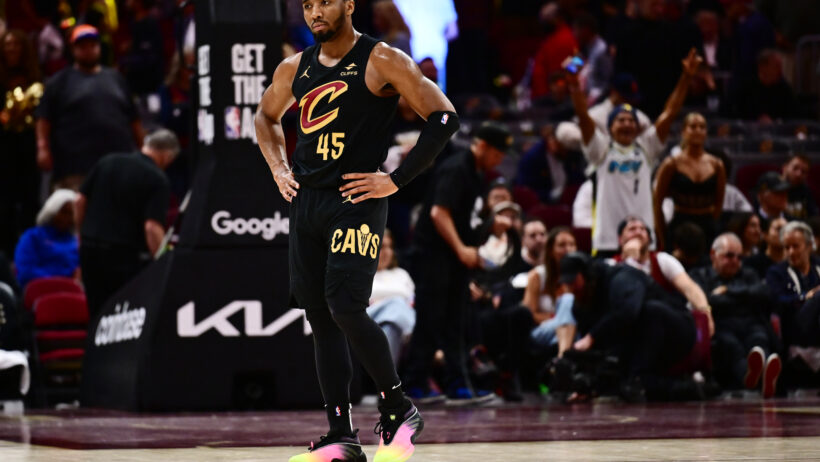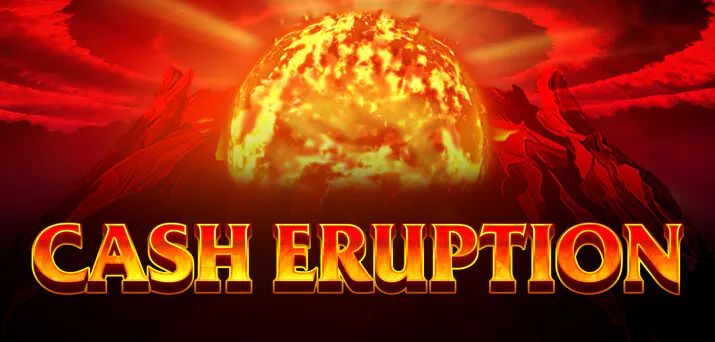Should MMA Have an Age Limit?
By Trevor Dueck in Mixed Martial Arts News
Updated: January 17, 2018 at 9:38 am ESTPublished:
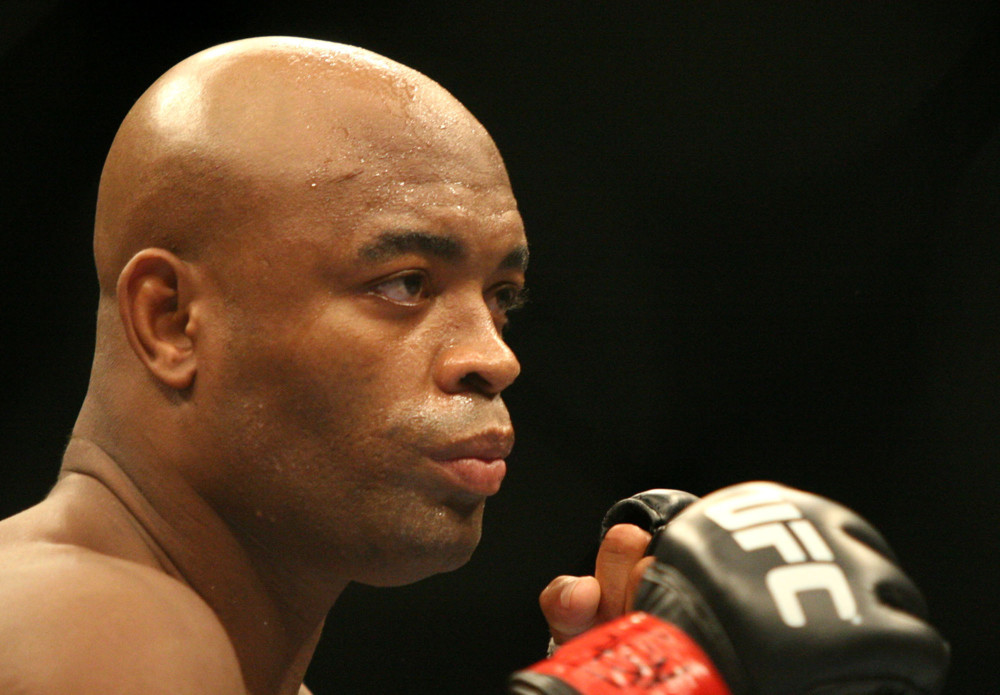
Despite everything we currently know about head trauma and the dire impact of repeated blows to the brain, we are starting to see older, past-their-prime professional fighters make George Foreman-like comebacks and extend their careers to dangerous degrees.
Watching iconic fighters from the past return to the cage — like when Rampage Jackson murked Ricardo Arona in PRIDE — stirs up feelings of nostalgia. Rampage was at his peak in a different time, and his return allowed longtime fans to reminisce about a past they claim was a golden era.
But should we be outraged that the great warriors of a foregone era are still being allowed to fight today? Should health concerns outweigh the warm-fuzzies and the fat stacks of cash promoters make off the backs of these legends? After all, a lot of “comebacks” don’t go as smoothly as Jackson’s.
Earlier this year, Bellator put on an event in Madison Square Garden that featured the likes of Chael Sonnen (40) who looked like the shell of the fighter he once was taking on Wanderlei Silva (41) who was coming off a three-year suspension for PEDs. Let’s not forget about Fedor Emelianenko (40) who returned from a three-year retirement and has looked terrible.
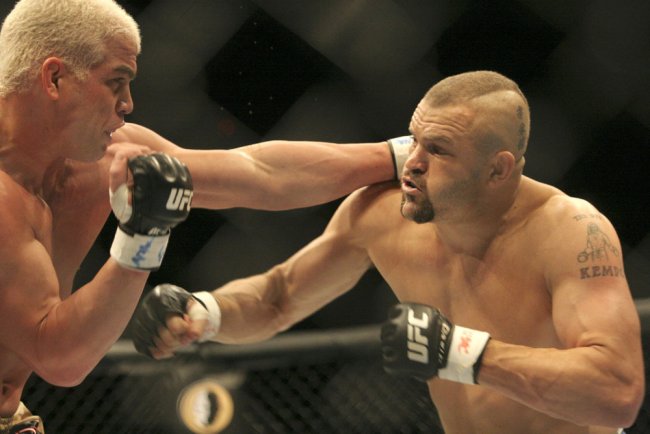
No matter how bad these athletes look in their geriatric comeback attempts, there’s no hint that they would ever be stopped from entering the cage, even with everything that we know (and are continuing to learn) about CTE (Chronic Traumatic Encephalopathy).
This “promotional mal-practice” of allowing fighters past their prime to compete isn’t anything new for Bellator, the UFC, or other promotions. It’s all within the framework of the current rules and it’s the job of the promoter to get more eyes to their event; having these names compete makes good business sense.
Bellator President Scott Coker has a history of calling on some of the greats from the past and featuring them alongside younger talent on a fight card. He employed this business plan back in the mid-2000s with the now defunct Strikeforce. And according to pay-per-view buys and ratings, MMA fans gobbled it up.
I will fully admit, I was always okay with it. Seeing the likes of Royce Gracie and Frank Shamrock return to the sport spoke to my inner fanboy.
However, maybe it’s my age, but for me, it’s becoming increasingly painful to watch and I am starting to be turned off by our blind ignorance, especially after seeing the effects that CTE is having on MMA pioneer Gary Goodridge. Yet, no promotion is stepping up and trying to protect the guys and girls they built their business upon.
There’s passionate debate about how young is too young for kids to train and compete in MMA. Yet, that same fervor has not found its way to the “how old is too old for combat sports” dilemma.
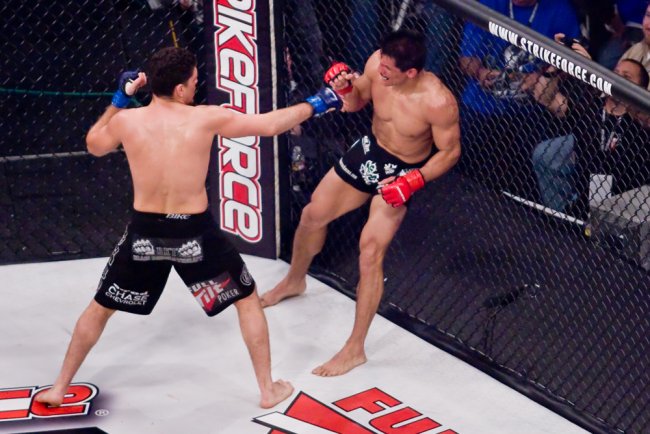
With all the chatter about a Legends League and more aging stars, like Chuck Liddell and even Randy Couture, open to coming out of retirement to fight again, now is the time to start having a serious discussion about whether MMA should draw a line in the sand and impose an age limit.
Currently, some commissions have separate rules in regards to fighters 38 and over. Anyone that falls within that age range is required to jump through some extra regulatory hoops before being licensed to fight. But just because older fighters can pass the required testing, doesn’t mean they should be in the ring receiving more blows to the head. CTE and the deleterious effects of too much repeat punishment don’t manifest immediately. Goodridge fought 11 times after turning 40. If age had disqualified him from taking those fights, would he be in better shape today? Almost certainly.
So how old is too old? If there’s going to be a maximum age to compete in combat sports, what should it be?
Obviously, this is a balancing act between competing ideals: on the one hand, you have society’s obligation to protect and ensure the safety of vulnerable individuals; on the other, you have the basic liberties of the fighters. (Who are we to say that a fighter with no obvious physical vulnerabilities is simply too old to get in the ring?)
Finding that sweet spot is tough, yet it’s something that should be done, since history shows that fighters often need to be saved from themselves. Joe Rogan demonstrated this a couple years ago when he had friend and UFC heavyweight Brendan Schaub on his podcast. Rogan, who is also the UFC’s color commentator, gave Schaub an uncomfortable reality check on the abuse the heavyweight was taking in the cage.
“I always wonder how long I’m going to do [commentary] anyway … The one thing I’m always conflicted about. The one thing, as I get older, and the more I understand the damage that people take.
I still love the sport, I still love watching it, still love all the complexities, the battle, and struggle. Guys rising above and getting better, the discipline and focus that’s required to reach a true, excellent state, but it disturbs the s**t out of me. What I’m saying to you [Schaub] today is not just for you. It’s to put it in the heads of a lot of people that don’t want to hear that s**t. There are a lot of guys out there that are hanging around a bar or gas station or wherever the f**k they go with their friends and they hung around too long. And everybody knows it.”
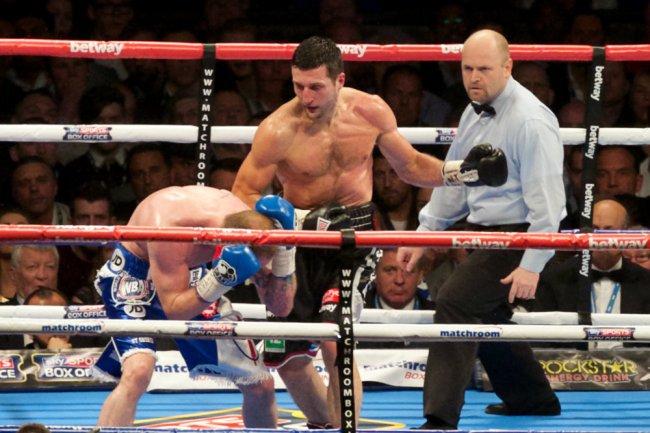
Retired professional boxer Carl Froch walked away from the sport of boxing at the peak of his career as the WBA and IBF super-middleweight champion. He felt he had nothing more to prove and told the British newspaper the Daily Mail, he knew he had to stop fighting because there are so many who don’t know when to call it a career.
“I don’t know whether they can bring different rules in on the licensing to stop people from coming back into the sport that have been retired a long time or past a certain age. There is an age limit of 35 on amateur boxing. They should consider putting an age limit on professional boxing.
They are forced into a situation where they feel like they need to box or have to box to put food on the table, which is a shame. Boxing is not like any other sport, you have to weigh up the risk and reward. Things like playing football, tennis, you might be three sets to love down, but boxing you’re going to the hospital on a stretcher and you know potentially you are going to get an injury you can’t walk away from.”
As we become more educated on age in relation to combat sports, not all fighters are ignoring the warning signs. After being knocked out by Demian Maia at UFC on FOX 21, Carlos “The Natural Born Killer” Condit was at a career crossroad. He had become aware of the abuse he was taking over his last few fights and acknowledged that it might be time to let the sport go. “I’ve taken a lot of punishment,” Condit said after his fight. “I don’t know if I can continue to take shots, honestly.”
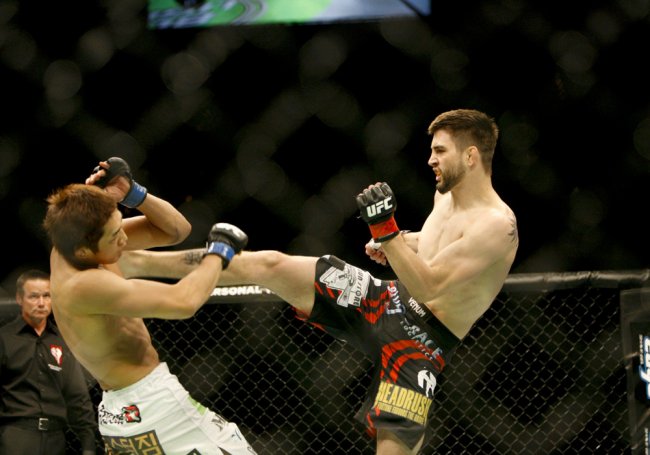
Condit’s manager, Malki Kawa, recently updated fans that his client is leaning towards retirement instead of putting his body through another war. “In reality, Carlos Condit has been in a lot of fights. He’s been doing this since he was 15 years old,” Kawa said on an episode of Chael Sonnen’s podcast. “He’s suffered a lot of concussion. He’s one of the few fighters I have who goes in and checks his brain and checks the damage assessed and all that.”
Bravo to Condit for keeping tabs on his health. But he is the exception, not the rule. If you look at many of combat sport’s elder statesmen, you can find symptoms of being punch drunk, like slurred speech. We’ve seen it with Goodridge, Liddell, James Toney, Evander Holyfield, and Antonio Rogerio Nogueira to name a small handful of men who have shown early indicators of suffering from fight-related brain injury.
The fact of the matter is that, when it comes to fighting, age matters. According to FightNomics, the average fighter peaks in their late 20s to early 30s, after that they start to lose strength, quickness, cardio capacity, and the ability to “take a punch” so to speak. When that happens, fighters are obviously more likely to lose bouts by strikes. Fighters who are 36-38 years old get knocked out at nearly twice the rate of fighters who are only 22-23.
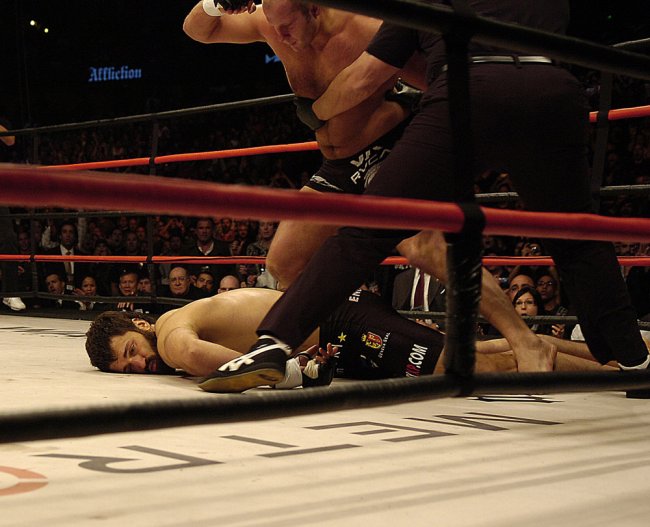
Why is this the case? According to FightNomics, “[t]he increase in knockout rates for older fighters is most likely due to years of cumulative damage as well as basic physiologic changes [which] lead to decreasing resiliency of the brain.” Because our brains decrease in size as we age, there is more room for them to bounce around inside our skulls, which means every blow to the head will result in a more severe impact for the brain, itself.
When you start to see an older fighter get KOed more often, when their “button” isn’t what it used to be, that should be a huge warning sign that it’s time to hang up the gloves.
But back to the central question at hand: how old is too old?
According to a well-researched article on Bloody Elbow, the average fighter starts to decline after about 9.5 years in the sport, with a standard deviation of 1.5. Most fighters who last longer than nine years have taken very little damage (less than two strikes per minute), though this doesn’t take into account how much damage they take in sparring sessions.
So people who start fighting professionally at 20 will almost certainly be declining by the time they hit their early 30s.
Based on all of the above, I would suggest 40 as a reasonable line in the sand. Even fighters who come to the game late — say at 30 — would still have a decade to hone their craft; they would still get their nine years to reach their peak and then start to regress. To me, that strikes the appropriate balance between ensuring vulnerable fighters are protected — even when they don’t perceive themselves as “vulnerable” — and allowing people the basic human right of deciding whether or not to get punched in the face.
Fighters know the risks they put themselves in when competing at the highest level. I appreciate, respect and enjoy what these Warriors can do at their peak levels of kick-assery, but it’s never fun to watch them slowly burn away, and it gets more and more dangerous for the fighters the older they get.
It’s time for the sport to grow up. Although, as mentioned, some commissions have added extra testing for aging fighters, it’s clearly not working. We need hard lines; we need buy-in from both commissions and promotions; we need regulatory cages to save fighters from beating themselves in their battle against Father Time.

Entertainment Writer
Trevor was Sports Betting Dime’s resident geek (aka: entertainment writer) from 2016-18. He also moonlights as a national film reviewer for other publications. He comes equipped with diplomas in marketing and broadcast journalism with a PHD in couch lounging.
